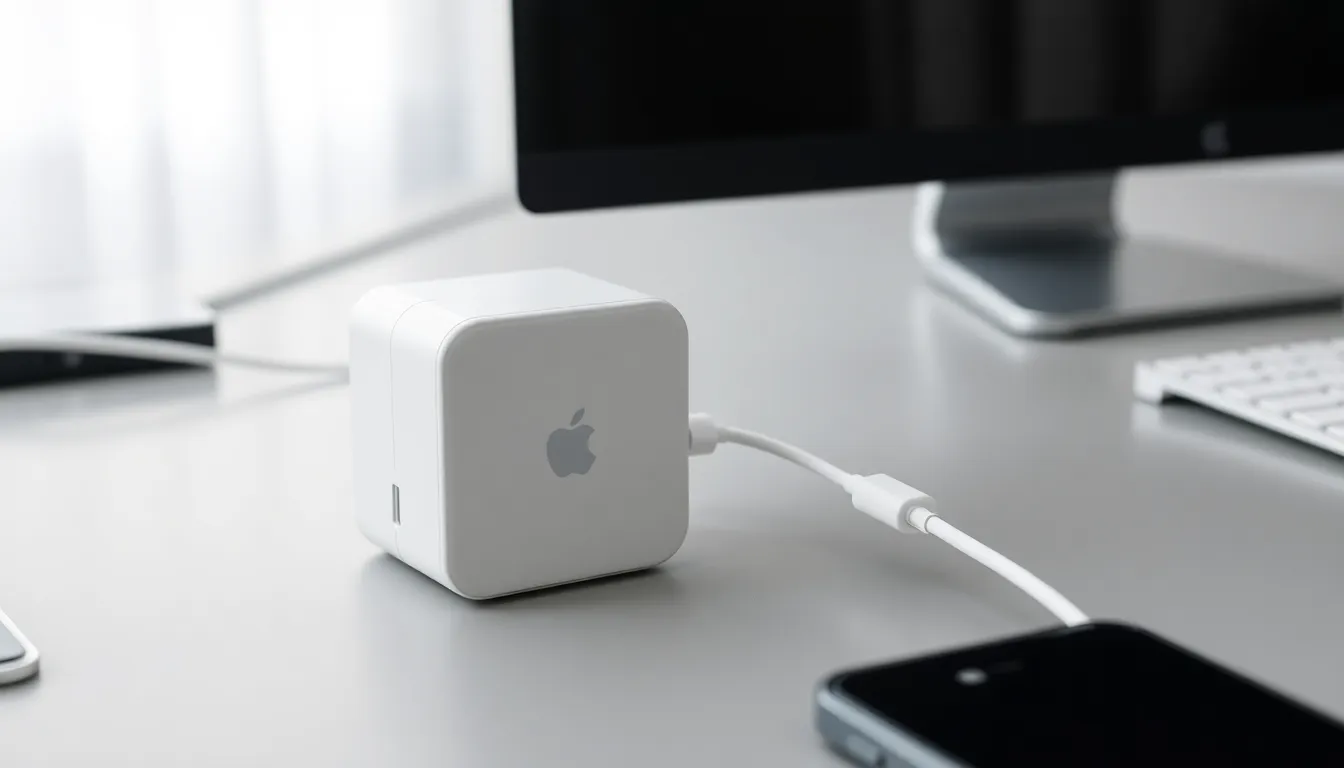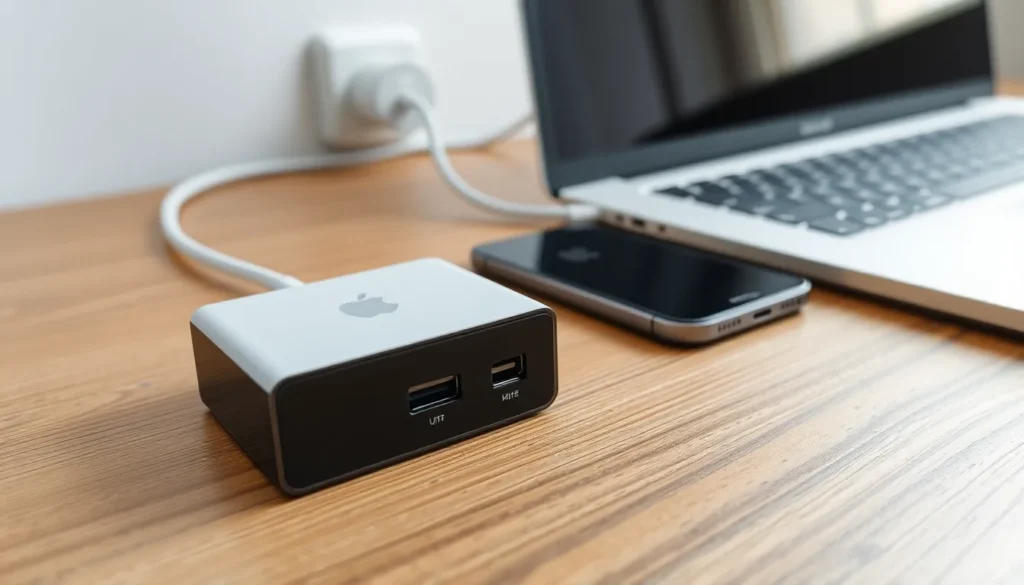Table of Contents
ToggleIn a world where chargers seem to multiply like rabbits, it’s only natural to wonder if that sleek MacBook charger can give your shiny new iPhone 15 a boost. After all, who doesn’t dream of a single charger to rule them all? Imagine the joy of untangling that mess of cables while knowing your devices are getting the power they need.
Understanding MacBook Chargers
MacBook chargers come in various types and specifications, designed to meet specific power requirements. Knowing these types aids in understanding compatibility with other devices.
Types of MacBook Chargers
Two primary types exist: MagSafe and USB-C chargers. MagSafe chargers utilize a magnetic connection, ensuring a secure fit for compatible MacBook models. USB-C chargers, more versatile, support a range of devices, including iPads and smartphones. Contact a specific wattage for each charger, with options like 30W, 61W, or 96W for different models. A higher wattage charger can safely power devices, making it useful for charging multiple items when necessary.
Compatibility Overview
Charging compatibility largely depends on the power output and connector type. The iPhone 15 uses a USB-C connector, allowing for direct charging with compatible MacBook USB-C chargers. While using a MacBook charger won’t harm an iPhone, it may charge at a different rate depending on the wattage. iPhones will only draw the maximum wattage they need, providing safe charging without risk of overloading. This universal approach to charging simplifies the use of one charger for multiple devices.
Using MacBook Charger for iPhone 15

Using a MacBook charger for the iPhone 15 presents an effective charging solution due to USB-C compatibility. Many users appreciate the convenience of one charger for multiple devices.
Charging Speed Comparison
Charging speed varies based on the wattage of the MacBook charger used. For instance, a 30W charger delivers a slower charge compared to a 67W or 96W charger. iPhone 15 models are capable of fast charging up to 20W. If a user connects the device to a higher-wattage charger, it draws only the required power. Therefore, a MacBook charger won’t cause overcharging, maintaining efficiency while optimizing charge time.
Safety Considerations
Safety remains a crucial factor when using a MacBook charger with an iPhone 15. All Apple chargers include built-in safeguards, preventing potential overheating or electrical issues. Apple dictates that iPhones take only what they require from chargers. Users can feel confident knowing that their devices engage in protective protocols. Ensuring compatibility with certified chargers reinforces safety in this charging approach. Most importantly, proper voltage and wattage guarantees safe and reliable charging experiences.
Benefits of Using a MacBook Charger
Using a MacBook charger for an iPhone 15 offers several advantages. Users can experience faster charging times with a higher-wattage charger, allowing the iPhone to reach its full battery potential more quickly. A 67W or 96W charger, for instance, provides ample power to facilitate fast charging, while the iPhone 15 is capable of fast charging up to 20W.
Versatility represents another significant benefit. MacBook chargers work well with a variety of devices, such as iPads and AirPods. This feature simplifies charging routines, as one charger can meet multiple device needs. Multiple device compatibility means less clutter and fewer cables, enhancing convenience for users who require a streamlined setup. By utilizing a single charger across devices, individuals can optimize their charging efficiency while maintaining device safety and performance.
Potential Risks and Drawbacks
Using a MacBook charger with an iPhone 15 involves some potential risks and drawbacks that require consideration.
Overheating Issues
Overheating can occur when an iPhone is charged with a high-wattage MacBook charger. Charging an iPhone at a higher rate than intended may cause heat accumulation. Excessive heat can lead to temporary device performance reduction, impacting the user experience. Although built-in safeguards exist, prolonged exposure to elevated temperatures could potentially affect internal components.
Long-Term Battery Health
Long-term battery health might suffer from over-reliance on high-powered chargers. Frequent charging at a rate above the device’s optimal specifications could accelerate battery wear. Lithium-ion batteries, including those in the iPhone, benefit from controlled charging cycles. Maintaining ideal charging conditions is essential for prolonging battery lifespan. Balancing convenience with optimal charging practices remains a priority for users seeking longevity in their devices.
Using a MacBook charger for the iPhone 15 is a practical option that offers flexibility and convenience. The compatibility of USB-C chargers simplifies the charging process for users with multiple Apple devices. While the iPhone 15 can safely draw the power it needs from a MacBook charger, being mindful of the wattage is essential for maintaining optimal battery health.
Higher-wattage chargers can provide faster charging times but may lead to overheating if not used carefully. Balancing the benefits of faster charging with the potential risks ensures a reliable and efficient charging experience. Embracing a universal charging solution not only reduces clutter but also enhances the overall user experience.







